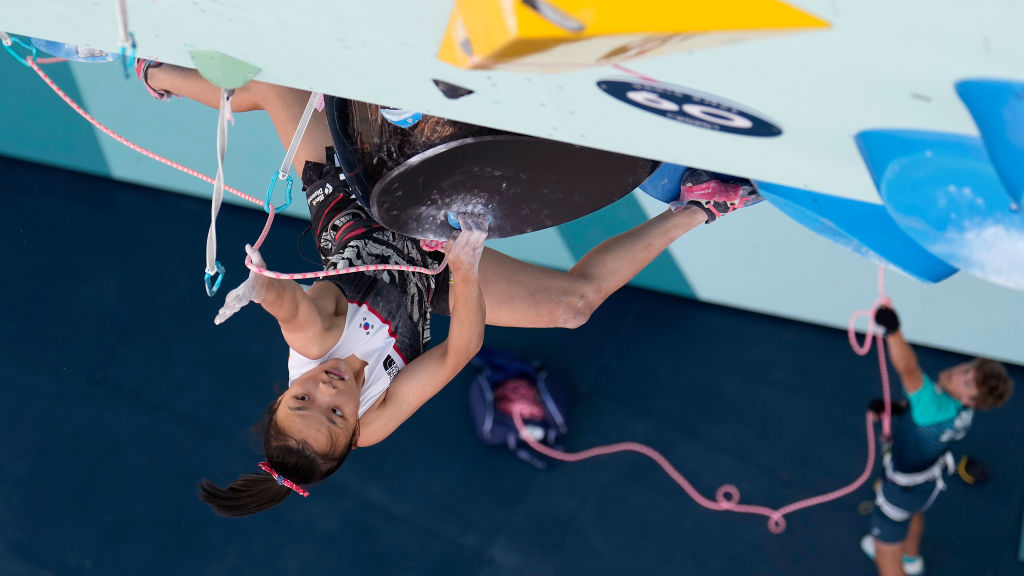Showers? WiFi? Replacement trekking poles? What’s available – and what’s not – on the trek to Everest Base Camp?
Trekking to the world's highest base camp doesn’t mean that you’ll have to go for 11 days without charging your phone or seeing a proper toilet
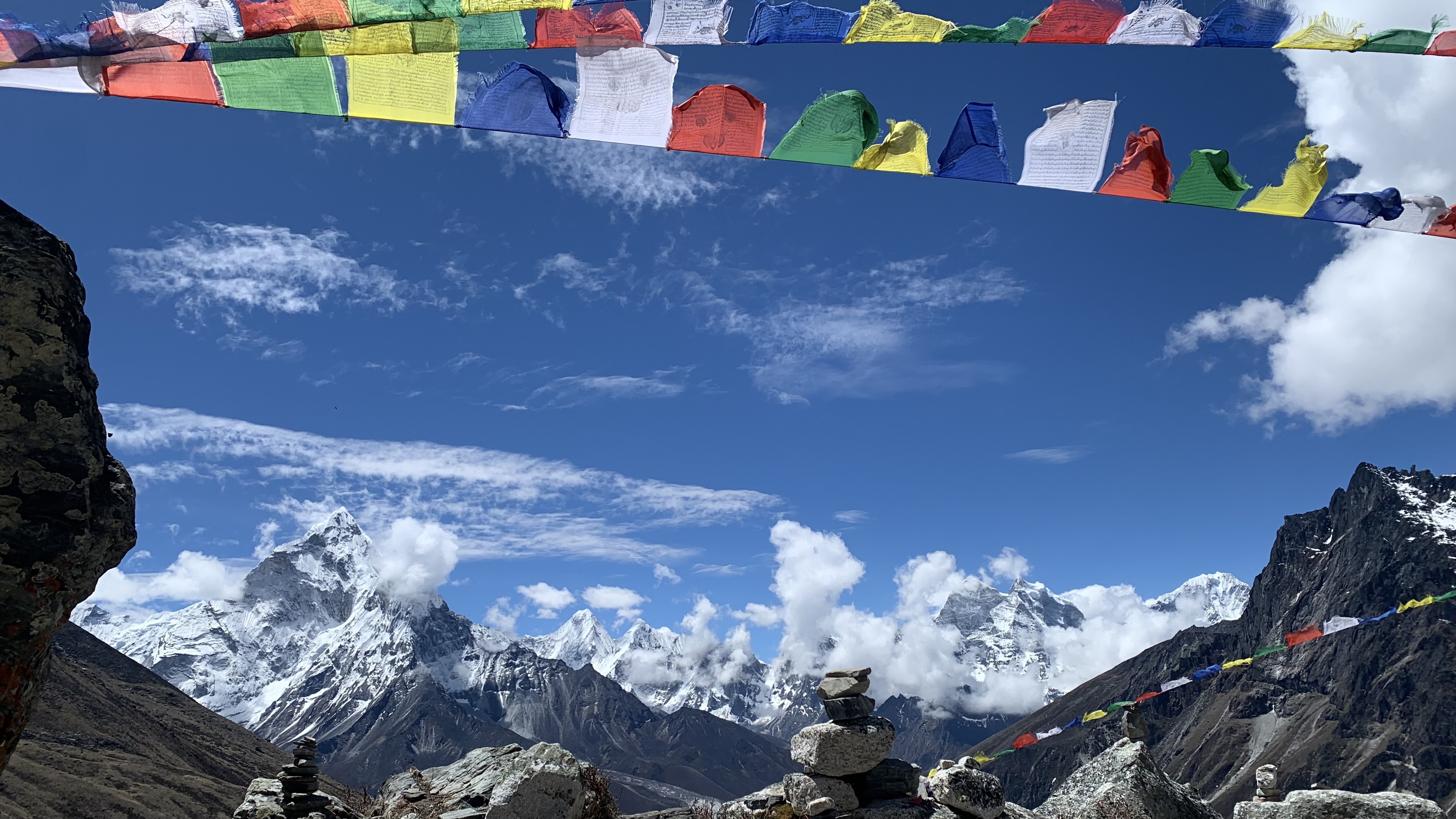
If you’re trekking to Everest Base Camp, it ought to be because you’re seeking a big adventure in remote terrain and a harsh environment with a good serving of physical and mental challenge thrown in. If you want comfort and luxury, you should probably go pretty much anywhere else on the planet. But that doesn’t mean that you’ll have to go for 11 days without charging your phone or seeing a proper toilet.
I spent months before my journey poring over packing lists provided by EverTrek and making sure I had all the right equipment and supplies so that I could be safe and comfortable, but when I arrived, I discovered that a whole industry has sprung up in the Khumbu region to make sure trekkers have everything they need (and want).
I don’t know that I’d have done anything differently if I’d had this knowledge in advance – I’d rather be 100% sure I have everything I need – but knowing how well-serviced the trail is might have cut down on my anxiety levels before the trek.
Whether you’re curious about the sleeping arrangements or how easy it is to send a text, all of your questions about what’s available – and what’s not – on the trek to Everest Base Camp are answered below.

Sleeping
On the trek to Base Camp, you’ll stay at the rather exotic-sounding teahouses that have sprung up throughout the Khumbu region in the decades since Lukla airport was established. These are simple lodges with basic but comfortable rooms that aren’t that far removed from the mountain huts of the Alps, only you don’t have to worry about sleeping top-to-tail with strangers.
As long as you’re trekking with a reputable company, you should have a private double room with a locking door. A surprising number of these rooms are ensuite, though as you get closer to Base Camp, you’re more likely to find shared bathroom facilities.
In my experience, the mattresses are fairly comfortable, and there’s usually a half-decent pillow and a very warm duvet. This should not be seen as a replacement for your sleeping bag, however. Teahouses are not centrally heated – there’s just a paraffin stove in the common area – and it gets cold at night.
I brought the outrageously toasty Big Agnes Torchlight Exp 0 (which I highly recommend, because it’s expandable for sleeping in different positions), and I used it plus the duvet most nights.

Peeing and pooing
Somewhere among the many kit lists I scrutinized before my trek, I read that I might want to bring a pee funnel so I could comfortably relieve myself outdoors. I dutifully packed my SheWee, and assumed that this was a sign that toilets wouldn’t be in plentiful supply. Nothing could have been further from the truth.
All the latest inspiration, tips and guides to help you plan your next Advnture!
Assuming you’re taking the Khumbu Valley route, the trek to Base Camp is lined with lodges and cafes where you can relieve yourself in outhouses. These came along at regular enough intervals that my SheWee never left my duffel bag, and in 11 days, I think I squatted behind a bush twice.
As for the quality of the toilets, it varies from the 'surprisingly not horrifying' variety with a flushing cistern to 'slightly scary' ones that are missing a seat (or have a loose seat that threatens to dismember you with a sudden slip forward) and a bucket of water and jug next to it for inefficient flushing. They get more 'rustic' the closer you get to Base Camp, but if it helps at all, they’re all better than the atrocities you’ll find at major music festivals (we’re looking at you, Glastonbury).
Sometimes there will be a donation jar asking you to help with the maintenance and cleaning, and if you’re not buying coffee or a drink, throw 50 rupees in.
While we’re on this topic, I don’t recall seeing a single roll of toilet paper anywhere, including at the teahouses, so pack your own. Two rolls just about had me covered for 11 days, and you can restock on the trail, but we’re not talking puppy soft Andrex here, so if you’re precious, pack three – I removed the cardboard tube from the middle so they took up less space in my pack.
Finally, though you might sometimes find a dubious looking bar of well-handled soap and a water dispenser outside, it’s not guaranteed, so you’ll do well to bring a small bottle of soap like Wilderness Wash and hand sanitizer for afterwards (slather it on liberally or you might end up, like me, face to face with a 'challenging' toilet for a few hours).
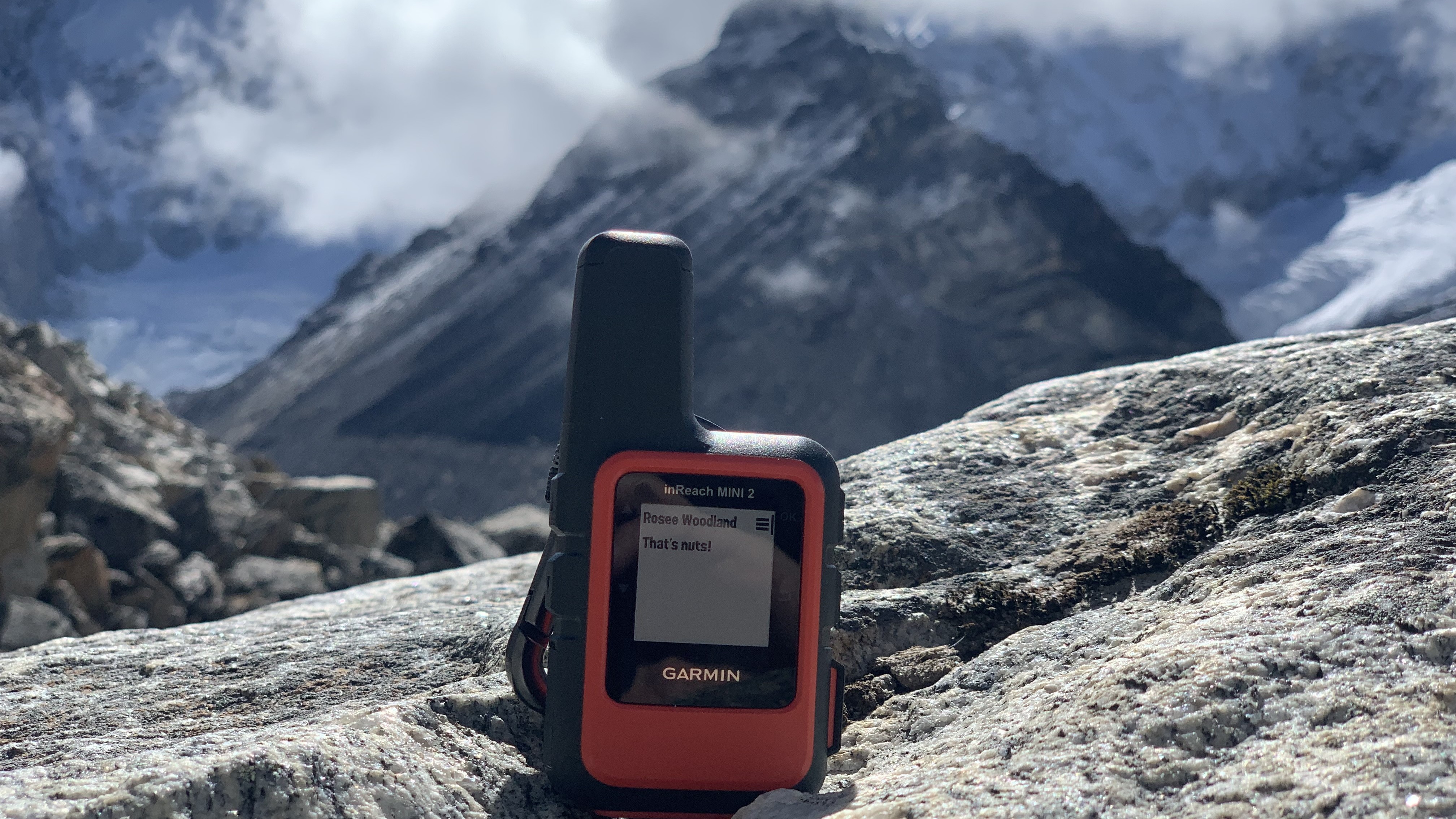
WiFi
Though I had been prepped that there would be some access to WiFi, I bid my loved ones goodbye with the understanding that they might not hear much from me for the best part of two weeks.
In my pack was a Garmin InReach Mini 2 satellite communicator for emergencies that would allow me to signal for help and send messages from anywhere. Fortunately, there were no emergencies and I mainly used it to excitedly text my editor when we met Tenzing Norgay’s son at a monastery.
Despite the incredibly remote nature of the trek to Base Camp, WiFi is plentiful all the way, and just about every lodge and coffee shop will let you log on. It’s generally free to access earlier on in the trek, but once you get past Namche Bazaar, you’ll most likely find that you have to pay for an internet card when you arrive at your teahouse. In 2025, these cost 1,000 rupees ($7) and they last for 24 hours (they even work at the next teahouse, since they’re all on the same network).
I didn’t attempt anything too data-reliant, like streaming movies, but the signal was always ample for exchanging messages and even uploading reels to Instagram. We got lucky with the weather, but the internet will go down if there’s a storm, so don’t be too dependent on it.
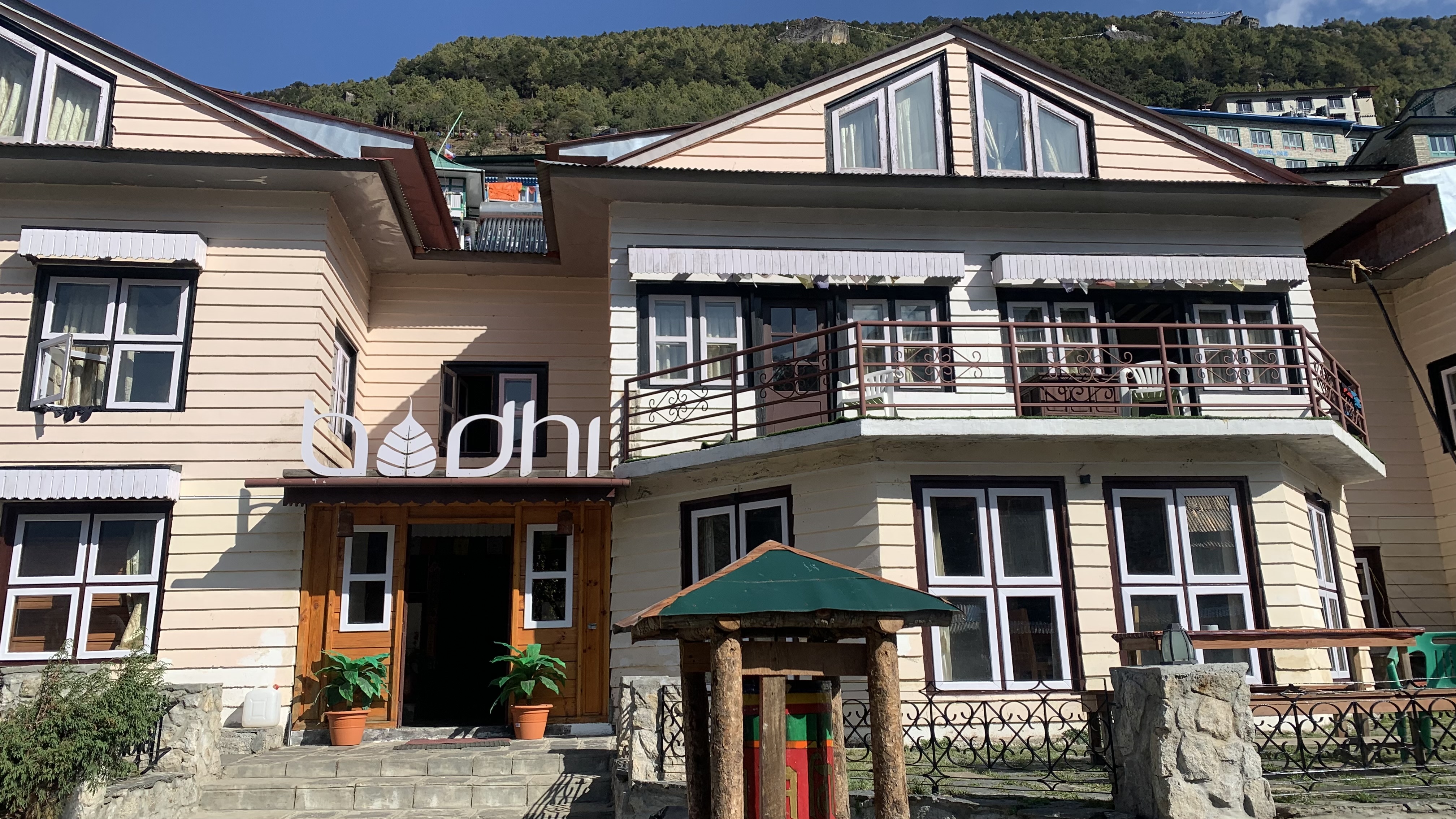
Washing
The typical trek to Base Camp entails 11 days of walking in conditions that can be sweaty and dusty, and most of your 'showers' will come in the form of Wet Wipes. That said, I did encounter something resembling a shower in two of my rooms along the way.
The hot water systems feeding these showers rely on solar power, which means that in theory, you can get a warm shower (a trickle, usually) but in practice if it’s cloudy or outside of the afternoon then it’s most likely an icy splash, but I did give my feet a wash once or twice out of respect for my teammates.
That said, if it’s important for you to shower regularly, most lodges will sell you a hot shower, usually for around 400 rupees ($3).
Most importantly, if you are trying to get a proper wash, it’s advised that you do so from the neck down. Viruses in the water can make their way into your system via your eyes and mouth, so save the hair wash till you get back to Kathmandu.
Likewise, if you realize that two pairs of hiking socks aren’t going to get you to the end of the trip, you can have the teahouses launder your clothes, for a few hundred rupees, but be warned that anything containing merino wool may not come back the same size.
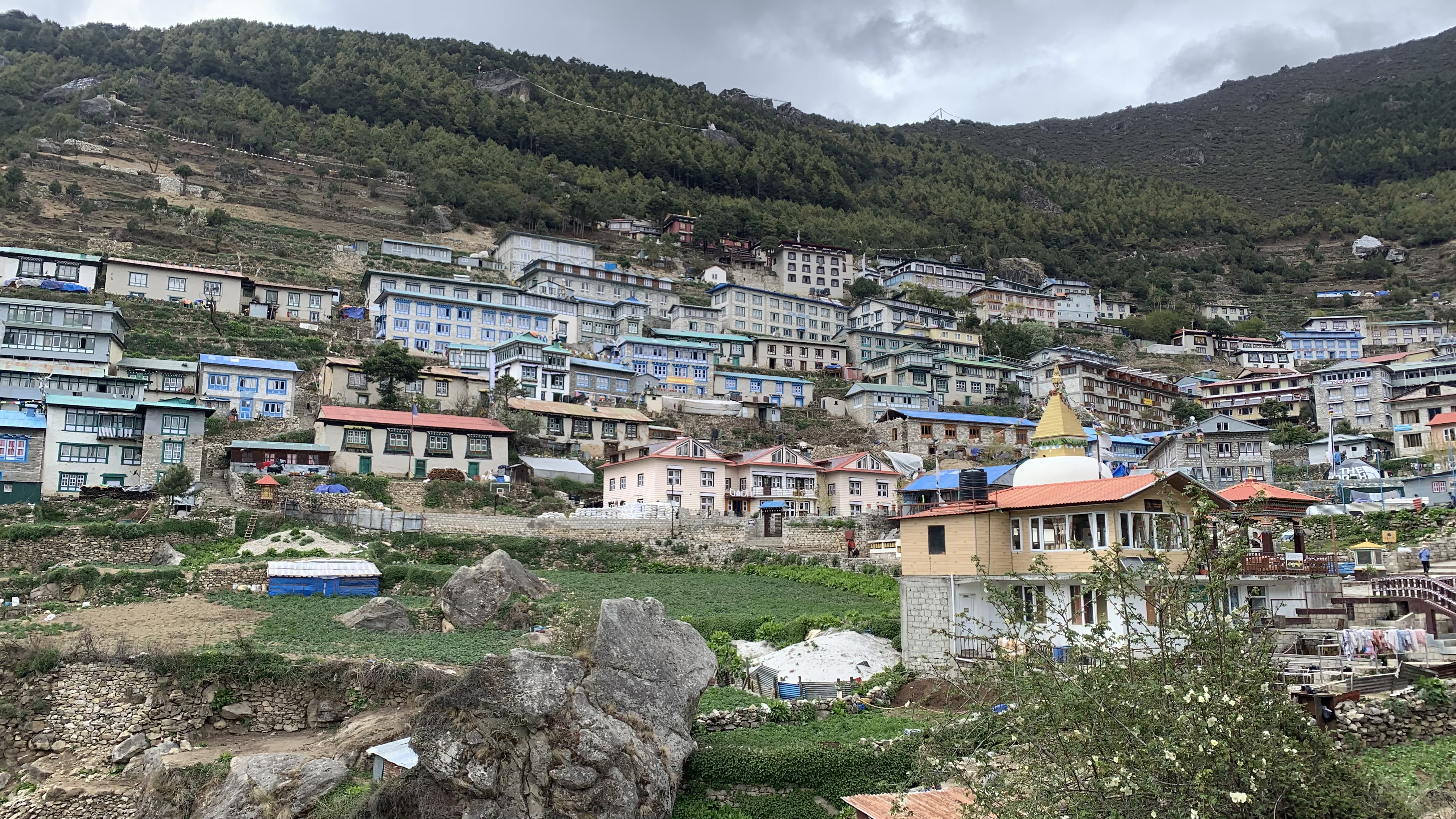
Cash
It's a good idea to bring a little spending money on the trek, as there are some lovely gifts along the way and you'll probably want the odd coffee or chocolate bar.
I flew to Nepal with cash (£400, which is roughly $550) which I exchanged into rupees at Kathmandu airport. This was more than ample for the trek, but there are cash machines available in Namche Bazaar if you run out or miscalculate.
Be warned that these can get emptied out, so you may need to try several, but you should be able to get more cash en route.
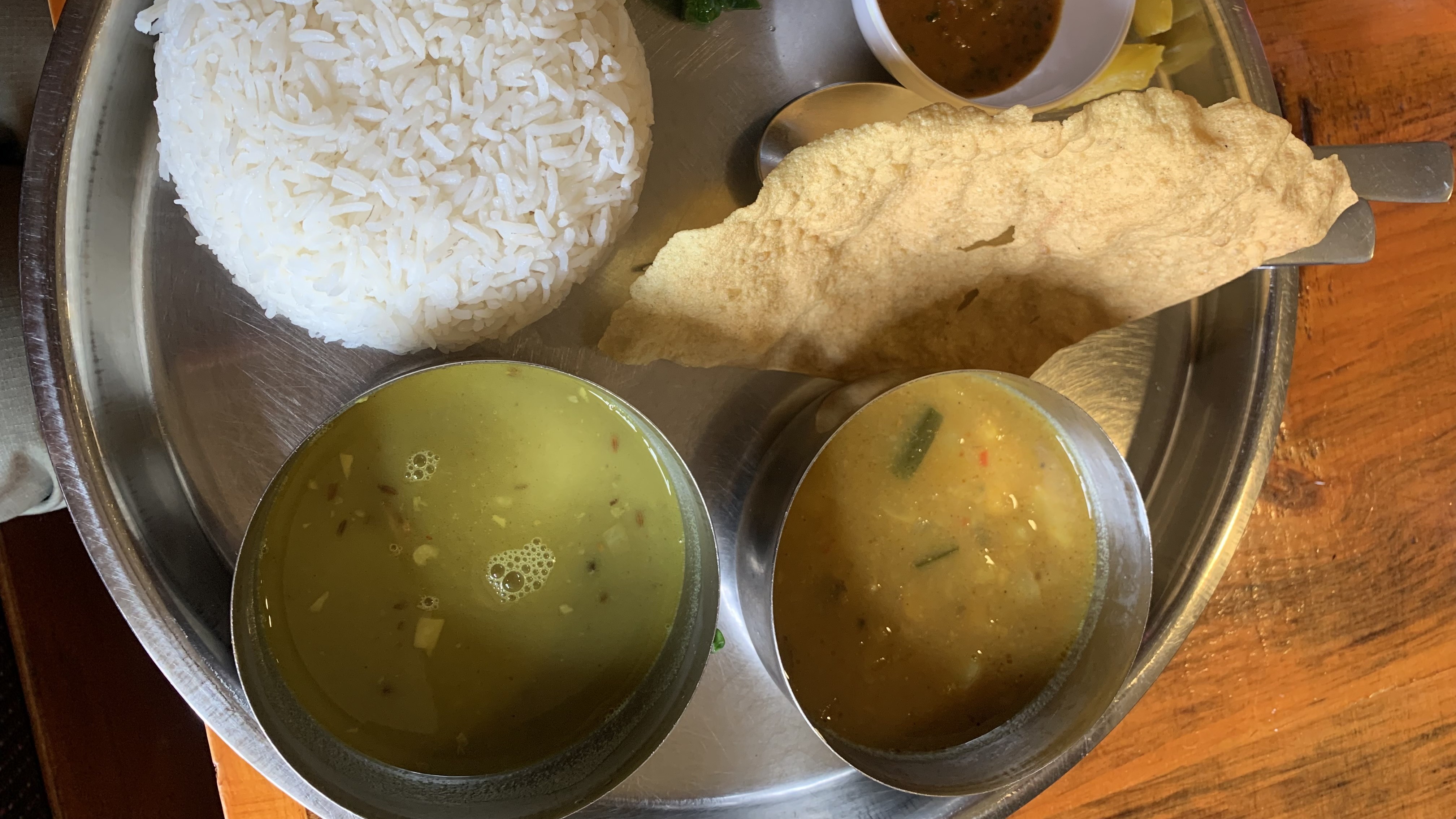
Eating and drinking
Your accommodation includes your dinner and breakfast, and hopefully the fee you’ve paid to your trekking company also covers your lunches, which will take place at teahouses along the way.
Eating on the trek to Base Camp goes something like this: at first, you’ll be amazed by the variety. In addition to Nepalese fare like Dal Bhat (all you can eat lentils, vegetable curry and rice), noodle soups and sometimes momos (steamed dumplings), there are dishes from around the world like pizza, pasta, french fries and omelettes. Sometimes you’ll even see burgers.
There are lots of vegetables available, like mustard greens, potatoes, radish and tomatoes, and these are grown in the Khumbu region. Be warned, though, that everything else has been flown to Lukla and then brought up on the back of a donkey.
For that reason, with the exception of the first couple of stops from Lukla to Namche, it’s advised you steer clear of all meat and anything claiming to have milk in it (this is usually milk powder mixed with water that hasn’t been purified). We were also advised to avoid fried food because the oil may not be changed very frequently.
By the end of the trek, that varied menu will start to look really repetitive, but the good news is that the food is surprisingly good given what the villages have available and you’ll find plenty of fresh stuff if you eat like a local.
If you need a bit more sustenance, the teahouses will always be happy to sell you a Snickers bar or a tube of Pringles with some elevation taxation thrown in for good measure. Occasionally, these will be three years out of date, but they can do a lot to boost morale.
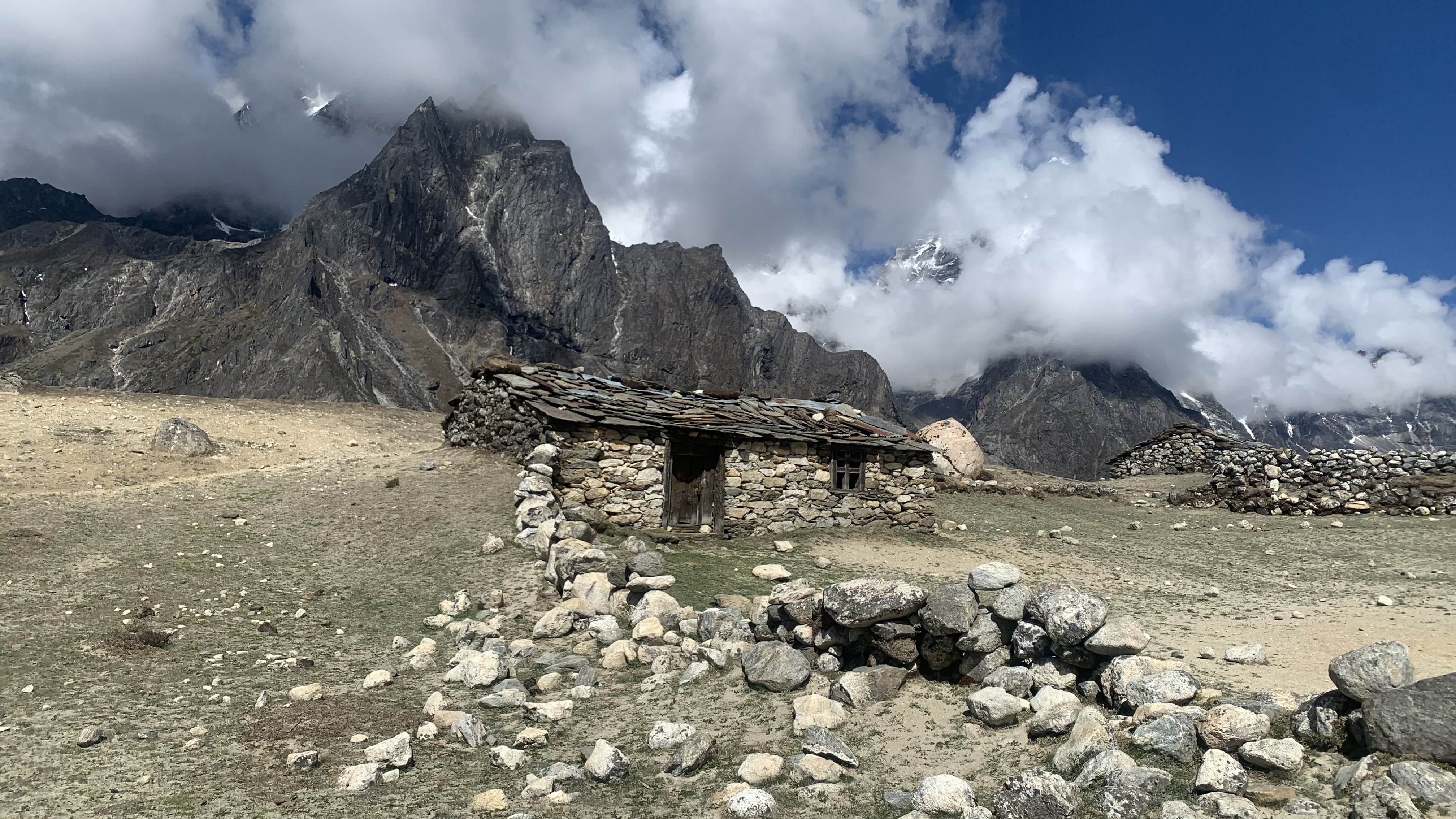
Charging devices
I’d love to tell you that I used the trek to have a complete digital detox, but I was there to work as well as walk and between my phone, Garmin Fenix 8, Coros Pace 3 (which I use as a control while testing other watches), Kindle and camera, I had something that required juicing up every day.
Most of the bedrooms on the trek don’t have electrical sockets (they do have electricity, but only for illumination), so you have two choices: bring portable chargers or pay the lodge around 300 rupees to charge your devices. I carried three fully charged Belkin portable chargers, and that more than sufficed for the trek.
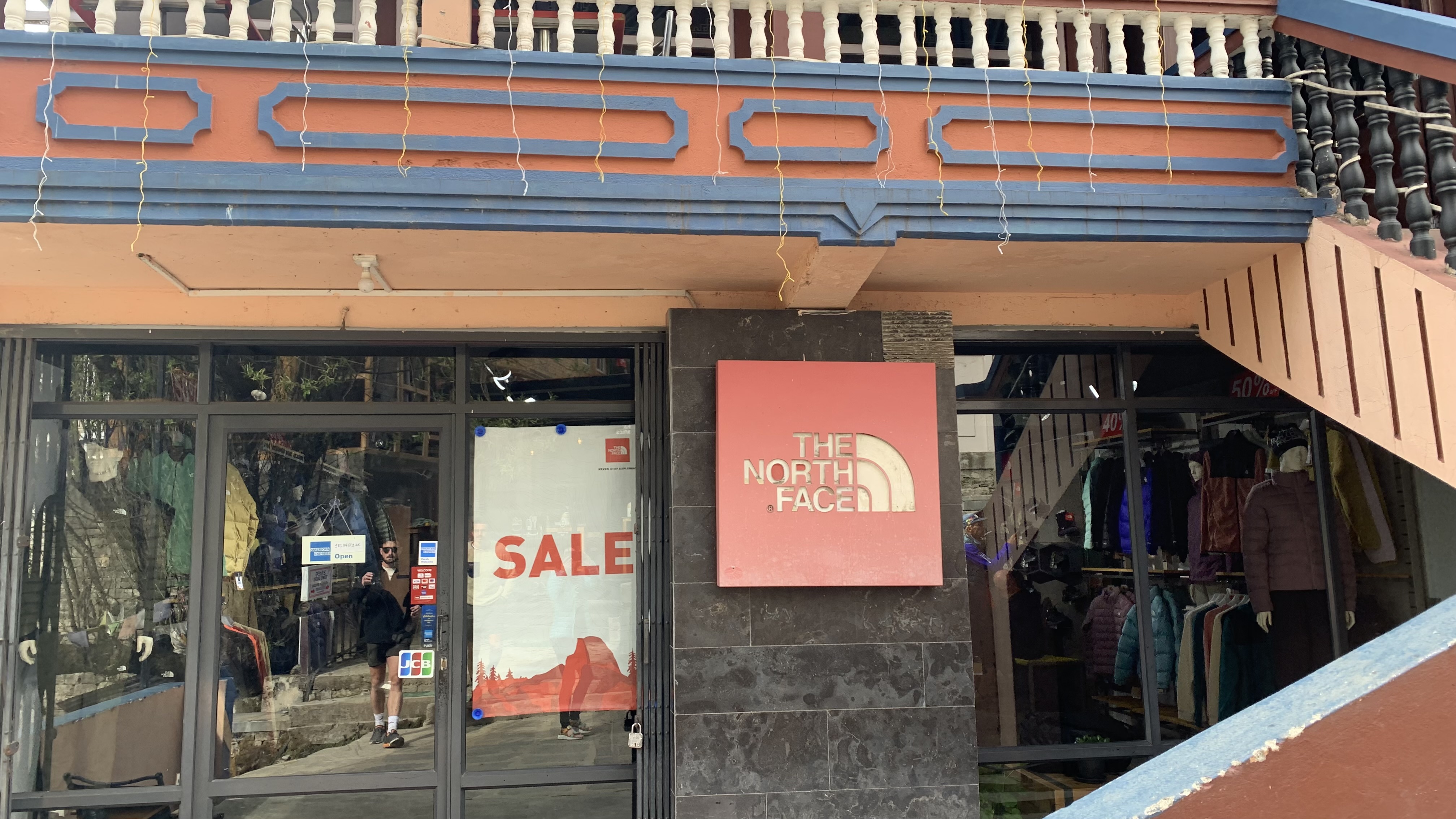
Replacement gear
Forgotten your trekking poles? Broken your headlamp? Don’t sweat it – you’ll be able to resupply on the trail.
I spent weeks triple-checking my kit list and even made an emergency detour for gaiters on my way to the airport (which I never needed), but there are loads of opportunities to buy outdoor gear.
From Lukla to Namche, you’ll find stores selling useful kit for trekkers, from basics like first aid kits and dry bags to technical gear like crampons and ice axes. There’s even an actual North Face store in Namche. You could in theory get everything you need on the trail and then you wouldn’t have to worry about that 15kg weight limit for the flight to Lukla, but of course the disadvantage is there’s no opportunity to test your gear beforehand, so save it for emergencies and know that you’ll be covered if you forget something.
While we’re on the topic, I highly recommend you stop off at the Sherpa store even if you don’t need anything. This Kathmandu-based brand uses its profits to help educate local children, and their eco-friendly gear is lovely and makes great gifts.

Personal items
Finally, though it’s smart to make sure you have all the medications you need – plus toiletries, hand sanitizer and painkillers – there are pharmacies in the main villages that can help you out in an emergency.
I stopped in and got some (unusually effective) cold medication and extra tissues on my descent, and others in my group grabbed items they’d forgotten like body wash and Vaseline.
Julia Clarke is a staff writer for Advnture.com and the author of the book Restorative Yoga for Beginners. She loves to explore mountains on foot, bike, skis and belay and then recover on the the yoga mat. Julia graduated with a degree in journalism in 2004 and spent eight years working as a radio presenter in Kansas City, Vermont, Boston and New York City before discovering the joys of the Rocky Mountains. She then detoured west to Colorado and enjoyed 11 years teaching yoga in Vail before returning to her hometown of Glasgow, Scotland in 2020 to focus on family and writing.

